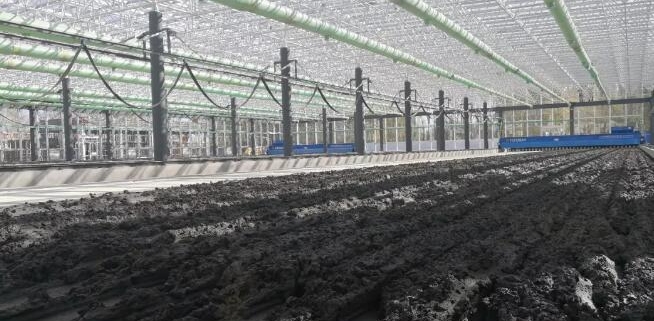China’s large-scale construction of sewage and water treatment plants, but sludge treatment and disposal has been neglected. The biggest bottleneck of sludge disposal is drying reduction. High cost has always been a problem that plagued the industry. In recent years, the sewage sludge drying technology has developed rapidly. The working principle and process of the direct heating drum sludge drying technology are introduced below.
First, the working principle of direct heating drum sludge drying technology:
The dewatered sludge enters the mixer from the sludge funnel, and a part of the sludge that has been dried is thoroughly mixed in proportion to make the solid content of the wet and dry mixed sludge reach 50% to 60%, and then transported to the screw conveyor. Three-channel drum dryer.
Second, the process of direct heating drum sludge drying technology:
In the drum, it comes into contact with the hot air flow with a flow rate of 1.2-1.3m / s and a temperature of about 700 ° C, which is mixed into the drum, and heated in a concentrated manner. After about 25 minutes of treatment, the dried sludge is conveyed by a screw with a metering device. The machine is sent to the separator, and the humid and hot gas discharged from the dryer is collected for thermal recycling, and the foul gas with pollution is sent to the biological filter for treatment to meet the discharge standards that meet environmental protection requirements. The granularity of the sludge can be controlled, and then the sludge particles that meet the requirements are sent to a storage bin for treatment through a filter.
The dryness of the dried sludge is above 92% or higher. The diameter of dried sludge particles can be controlled at 1-4mm, which mainly considers the possibility of using dried sludge as fertilizer or landscaping. The fine dry sludge is sent to the mixer and mixed with the wet sludge into the drum dryer. The burner used to heat the drum dryer can use biogas, natural gas or hot oil as fuel.
The separator separates the dried sludge from water vapor. The water vapor carries almost all the heat consumed by the sludge during drying, and this part of the heat needs to be fully recycled. Therefore, water vapor must pass through the condenser, the cooling water inlet temperature of the condenser is 20 ° C, and the outlet water temperature is 55 ° C. The cooled gas is sent to the biofilter for treatment, and the exhaust gas is discharged after it has completely reached the discharge standard.
The characteristics of the drying system are: operating in an oxygen-free environment, no dust is generated, the dried sludge is granular, the particle size can be controlled, and the gas recycling design is used to reduce the cost of tail gas treatment.



